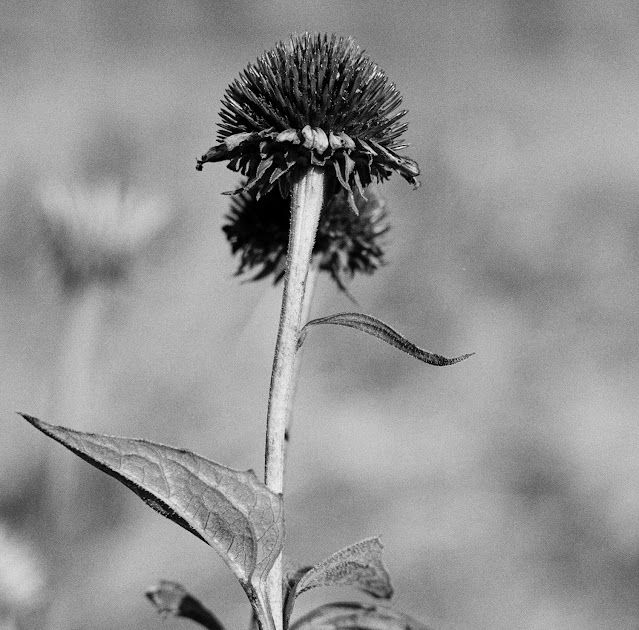Back in 2019 I began dabbling in film photography. I started off with a Nikon 35mm camera, which seemed a natural fit because I have a large collection of compatible Nikon lenses, but I found that I didn't enjoy shooting it. Not one to be so easily deterred, I opted to try broaden my horizons and try medium format.
My first medium format camera was a Mamiya C33. It was a fixer-upper with a broken focusing knob, a wonky winding mechanism, and horrible light seals. But it was cheap and I was experimenting, so I took the plunge. I fixed the first and third items, but the wonky winding mechanism remained an issue the entire time I used it*. I'd only get 9-10 exposures per roll instead of the 12 that I should have been, which was frustrating.
I really should have a photo of it...but it was kinda beat up and not much to look at. I didn't take any photos of it until after I converted it to shoot Instax film, but that's a topic for another time.
The only lens for it I had at the time was a late-model Mamiya-Sekor 135mm f/4.5. It's generally the least expensive of the Mamiya C lens lineup and I had seen some folks pan its optics, but, as with the body itself, I was looking to minimize costs since I was just experimenting.
The first roll of film I put through it turned out...okay. It was a roll of Kodak Porta 400 that I used to shoot very boring subjects in order to do side-by-side comparisons with a lens of the same focal length (135mm) on full frame digital and crop-sensor digital.
What can I say, I'm an engineer.
The next film I shot was Ilford HP5. I shot this roll purely for fun, and I spent a good deal of time shooting it getting more familiar with the camera and how to coax more shots out of the wonky winding mechanism. I also paid more of attention to my focusing, as I noticed that I hadn't quite gotten my focus right on my first roll. The large viewfinder with the flip-up magnifier helped mightily in this regard.
I was generally pleased with how the photos turned out, but I kept coming back to this one.
 |
| Thistle at Gorman Farm, Columbia, MD |
While this is hardly the greatest photo ever, two things about it did catch my eye:
1. The background. The way the flower in the foreground completely stands out from the background surprised me. I also appreciated the way that the flower in the background looked almost painted on. It's an aesthetic I resonate with.
2. The detail. Holy cow, the sweet, luscious detail! I shot this wide open, and there is just so much detail in that central flower. Here, take a look:
 |
| 100% crop of above |
Getting that mix of artistic isolation and detail on 35mm-sized formats wasn't something I had really accomplished before, even as a shallow depth of field junkie using very fast lenses. This just felt different. Mathematically speaking, I know that a 74mm f/2.5 lens on my D750 should achieve a similar depth of field, but the math could never have predicted this outcome**.
Plus, as a bonus, this painterly aesthetic and lovely subject detail was achieved with the cheapest lens in the ecosystem. Score!
Between the subject isolation and detail in the photos, and the viewfinders on the cameras, I soon found myself hooked on larger format photography. And since the only practical way to shoot larger format cameras (at least on my budget) is with film, I was thus also hooked on film. To this day, the only 35mm film I've shot beyond my first handful of rolls through my Nikon has been through a medium format camera. (It's fun if you can make it work.)
I currently own two (functional) medium format cameras (Mamiya C330s and Mamiya RB67 ProS) and a single large format 4x5 camera (Toyo-View 45CX). I don't shoot them as often as I should, but I always enjoy it when I do. It's a different experience than digital, slower and more methodical. Relaxing.
 |
| My Mamiyas |
Plus...the distinct thunk that the RB67 makes with you take a photo is just so satisfying....
I may give 35mm film cameras another go at some point, but for now I exclusively shoot digital for smaller formats.
Epilogue
It's worth noting that I had all of my early rolls of film professionally scanned. As I would find out later once I started developing my own film, getting good scans of film is hard; you can't just slap it on a regular flatbed scanner and expect anything but garbage. I eventually came up with a reliable DSLR rig to match the resolution of the print shop, and paying $3 per high res scan seems cheap in comparison now. If you're going to shoot film, make sure you are willing to put in the effort, or pay the money, to properly transfer it to print or digital, otherwise so much of your effort will just go to waste.
* It turns out that I wouldn't use my C33 very long. Shortly after I shot this roll I shelled out a few hundred bucks for a Mamiya C330s, and have been immensely happy with it.
** I had experienced this before on digital with certain lenses, especially my Helios 44-M 58mm f/2, but never to this degree.
Comments
Post a Comment